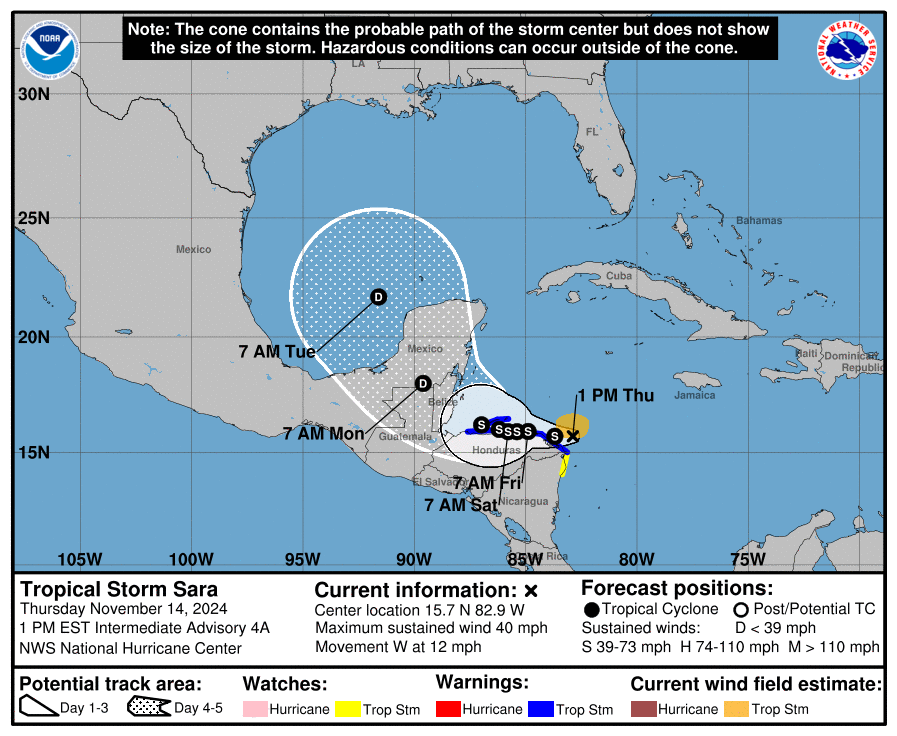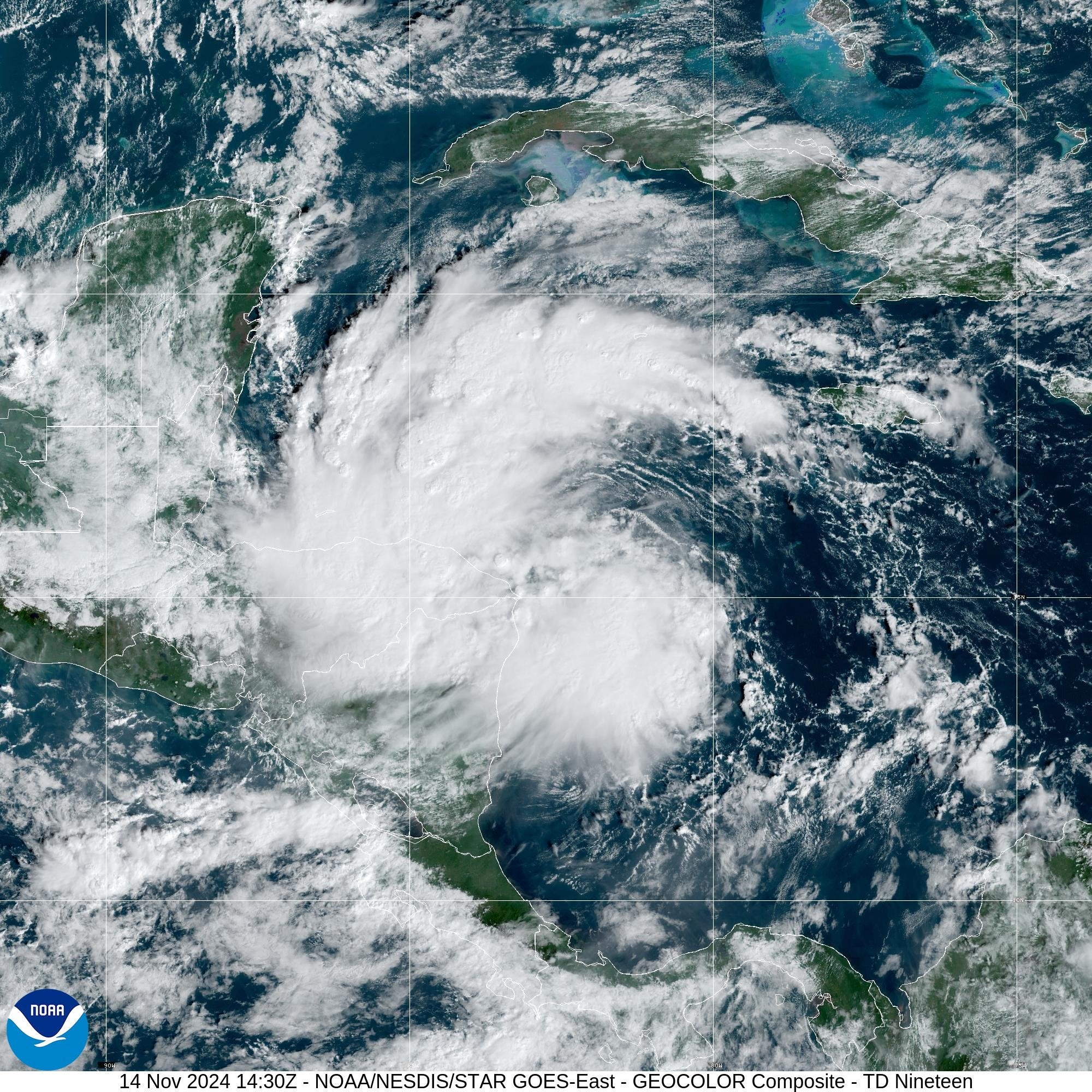Tropical Storm Sara could cause ‘life-threatening’ devastation as experts warn of US impact
The storm is expected to bring life-threatening and potentially catastrophic flash flooding and mudslides to Honduras
Your support helps us to tell the story
From reproductive rights to climate change to Big Tech, The Independent is on the ground when the story is developing. Whether it's investigating the financials of Elon Musk's pro-Trump PAC or producing our latest documentary, 'The A Word', which shines a light on the American women fighting for reproductive rights, we know how important it is to parse out the facts from the messaging.
At such a critical moment in US history, we need reporters on the ground. Your donation allows us to keep sending journalists to speak to both sides of the story.
The Independent is trusted by Americans across the entire political spectrum. And unlike many other quality news outlets, we choose not to lock Americans out of our reporting and analysis with paywalls. We believe quality journalism should be available to everyone, paid for by those who can afford it.
Your support makes all the difference.Tropical Storm Sara could unleash “life-threatening” devastation on parts of Central America after forming in the Caribbean Sea.
The system, which strengthened from a tropical depression on Thursday, is closing in on Honduras and will eventually move toward the Gulf of Mexico.
While it remains too soon to determine what impact, if any, Sara could have on Florida or other parts of the US, forecasters say it could bring rainfall and flooding concerns.
“We now expect this storm to spend more time over land in Central America,” AccuWeather Chief Meteorologist Jon Porter said in a statement. “That will reduce the wind intensity before it reaches the Gulf of Mexico. This storm could be drawn to the northeast by a departing area of high pressure over Florida. A dip in the jet stream over the central US will create a pathway for this storm to be slingshotted toward Florida.”
“We could see heavy rainfall and flooding concerns in parts of central and south Florida next week. Florida does not need more tropical storm impacts. Many people are still recovering and trying to rebuild from hurricane landfalls earlier this year.”

In the case that the storm is significantly disrupted by its interaction with land and prevented from restrengthening, the US could see minimal or no impacts.
“We cannot rule out the possibility that this storm could strengthen into a hurricane if it is able to avoid extended interaction with land. A matter of miles could make a big difference,” said Porter.
However, the depression will produce life-threatening and potentially catastrophic flash flooding and mudslides over Honduras through the weekend, bringing between 10 to 20 inches of rain over northern parts of the country.

In the rest of Honduras, Belize, El Salvador, eastern Guatemala, and western Nicaragua, Sara is expected to produce five to 10 inches of rain, with some areas seeing up to 15 inches. It is then anticipated to linger over portions of Central America for the next several days, and related storm surge could raise water levels there by up to three feet above the normal levels along the coast.
The tropical storm is shifting westward near 14 miles per hour, and is forecast to meander near the coast through the weekend before potentially swinging toward the northeast once it reaches the Gulf of Mexico.
Sara, which was traveling about 65 miles northeast of the east coast Nicaraguan and Honduran border, has maximum sustained winds of 40 miles per hour. Tropical storms typically have maximum sustained winds of between 39 and 73 miles per hour.

Join our commenting forum
Join thought-provoking conversations, follow other Independent readers and see their replies
Comments